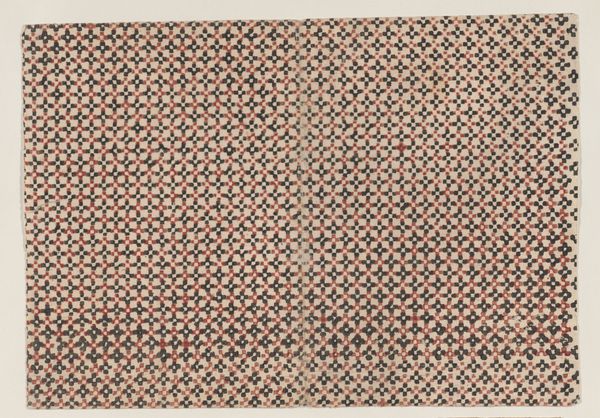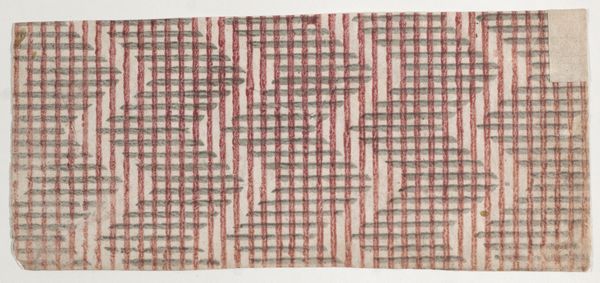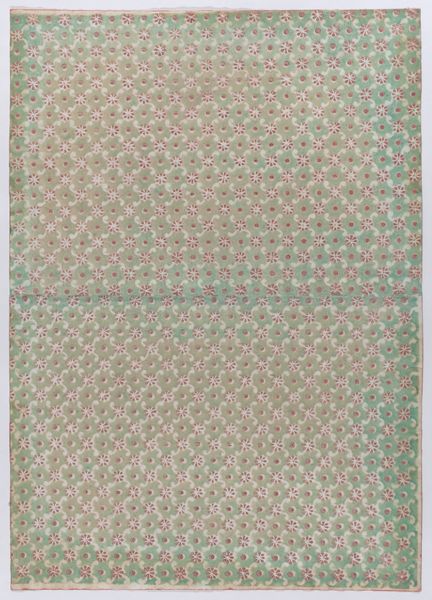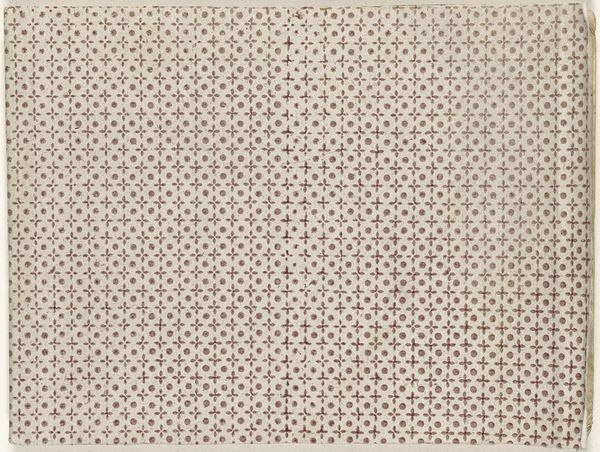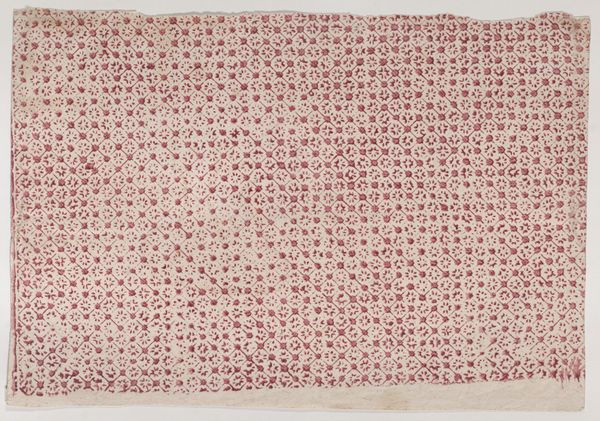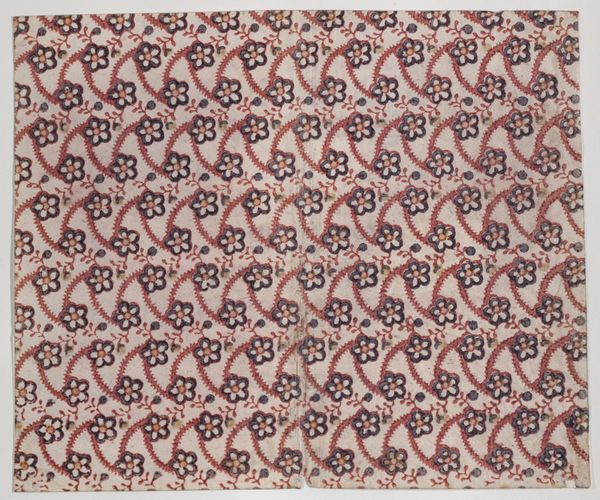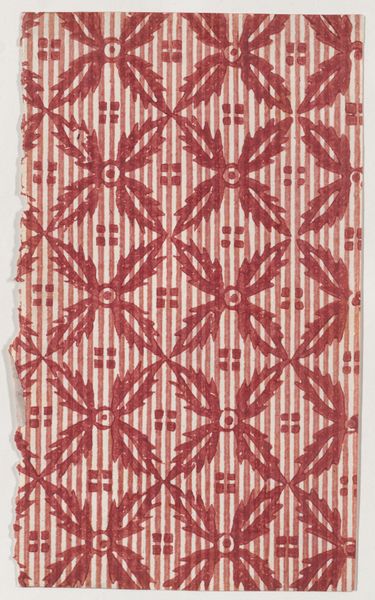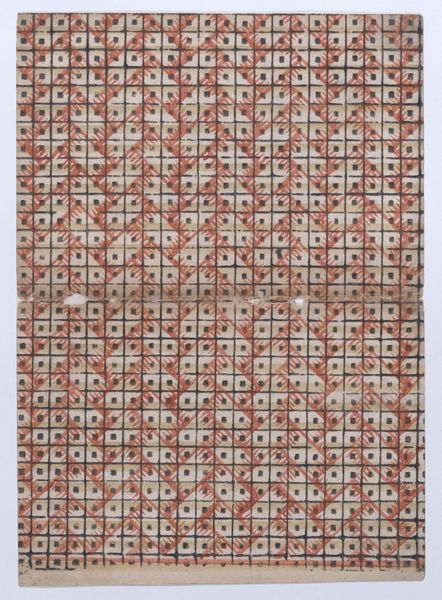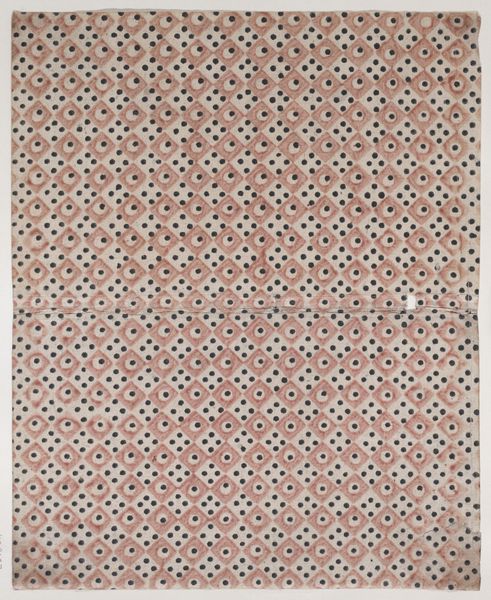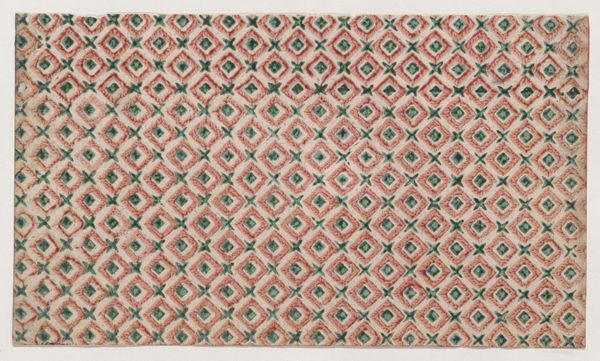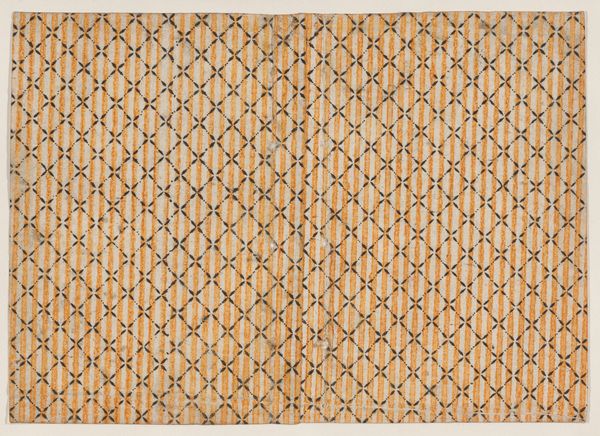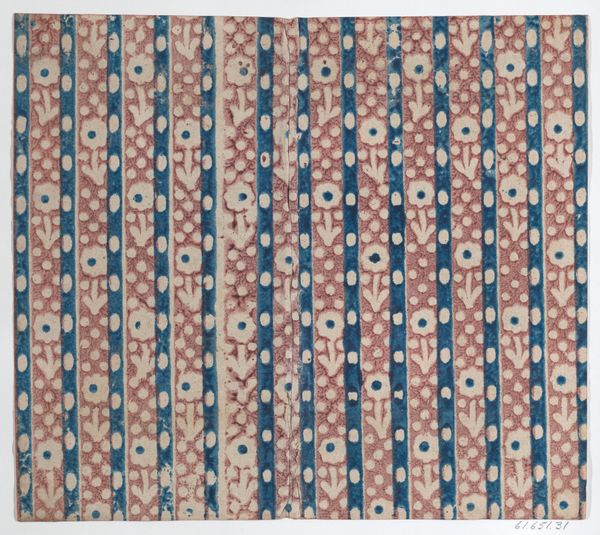
Book cover with red crisscross and stripe pattern 1800 - 1900
0:00
0:00
drawing, print
#
drawing
#
natural stone pattern
#
random pattern
# print
#
pattern
#
geometric pattern
#
abstract pattern
#
organic pattern
#
geometric
#
repetition of pattern
#
vertical pattern
#
pattern repetition
#
layered pattern
#
combined pattern
Dimensions: Sheet: 6 7/8 × 8 5/16 in. (17.5 × 21.1 cm)
Copyright: Public Domain
Editor: Here we have an intriguing book cover from the 19th century, sporting a vibrant red crisscross and stripe pattern. Looking at this cover, I immediately think about the amount of handwork, and potentially industrial weaving, that it took to realize such a design. What’s your take? Curator: This object speaks volumes about the convergence of craft, industry, and class in the 19th century. The regularized pattern hints at machine production, perhaps reflecting emerging textile technologies of the time. Consider how the dye itself was sourced and applied – was it a natural or synthetic pigment? This informs our understanding of trade routes and the chemical industries developing then. Editor: That’s a fascinating thought – how much the process of its creation reveals about larger social and economic systems. It also challenges the hierarchy that puts ‘fine art’ above the ‘decorative’ or functional, doesn’t it? Curator: Precisely. Book covers, often overlooked, were instrumental in disseminating knowledge and shaping cultural tastes. Who was this book intended for, and how did its cover contribute to its marketability? The choice of this bold pattern likely served a specific purpose. What are your thoughts on its overall effect and the impact on a potential buyer? Editor: I suppose, the strong red color and geometrical nature of the cover gave the book a modern, striking allure in its time. This makes me realize the significance of bookbinding and textile production as part of a vast material culture we should definitely not neglect. Curator: Absolutely. By understanding the material and production of something like this book cover, we gain insights into the broader networks of labor, commerce, and consumption that defined its era.
Comments
No comments
Be the first to comment and join the conversation on the ultimate creative platform.
